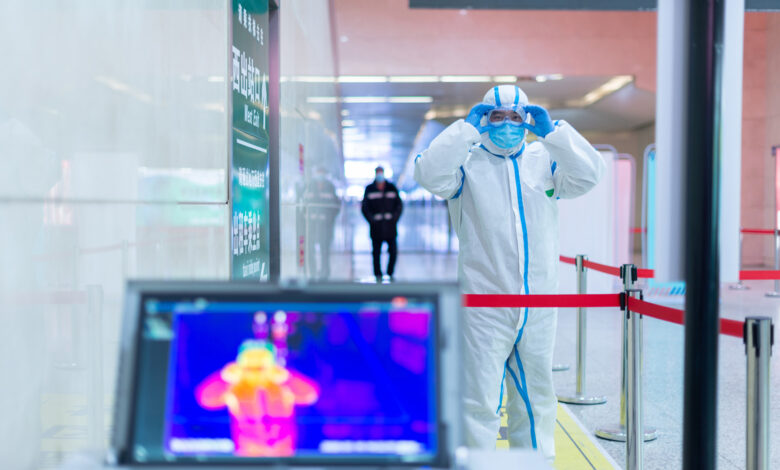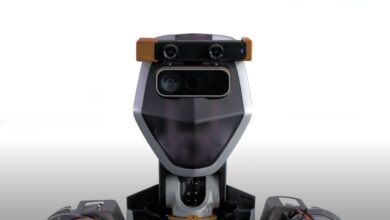Technology Innovation to Tackle the Coronavirus Threat

The speed of events in the last few months has been truly breathtaking. Today, that which was normal and ordinary has almost become a distant and treasured memory. Activities like going for a walk, dining with friends, heading to work, or even getting a haircut are now in limbo. We live glued to our phone or TV screens, waiting for the latest update on SARS-CoV-2. The opinions of experts are everywhere, and the rumors of potential cures or treatments have become precarious lifelines. Nevertheless, more than ever, besides our responsibility as citizens and the awareness of our belonging to a community, technology innovation is still our greatest ally.
Coronavirus: solutions for today… and tomorrow
Of course, in the long run, drugs, and vaccines will still be the final solution, but right now, researchers all over the world are putting their know-how at the service of this battle, which could be compared to climate change as a challenge. At I’mnovation-Hub, we would like to share some of the inspiring technologies that are proving their value in the fight against the coronavirus. We also want to cover new solutions that could play a vital role in future pandemics.
Artificial intelligence and big data are disrupting wildly different sectors such as archaeology, construction, or even communication between humans and animals. Of course, healthcare is not foreign to these innovations. At the University of South California labs, they are using machine learning to adapt existing drugs for coronavirus treatments. The software analyses how different drugs work and their potential effect on the virus. A Korean company has followed similar logic in the search for anti-retroviral agents that can help with the disease. Along the same lines, Deep Mind, a branch of Alphabet, is using its AlphaFold system to provide scientists with a better understanding of SARS-CoV-2. Another example is the supercomputing consortium promoted by a Spaniard scientist. Giants like Microsoft, IBM, Amazon, or Alphabet, together with universities and tech centers like MIT, are offering their vast compute resources fro COVID-19 research.
AI is also being used to analyze the propagation patterns of the virus, as well as creating predictive models. On 30th December 2019, a company specialized in artificial intelligence alerted about a cluster of pneumonia incidents in Wuhan. Moreover, they created a map of journeys from the city to the most common destinations. Eleven cities from that list were some of the first to suffer COVID-19 viral outbreaks.
If there is an advanced device in the hands of a large proportion of the population, it is undeniably the smartphone. With wireless and GPS capabilities, they are the ideal instrument to track the movement of infected people and alert about COVID-19 symptoms. As there were some privacy concerns at the beginning of the crisis, several approaches have been adopted:
- “The Shield,” an app launched by the government of Israel to hold back the coronavirus, allows each user to know if they have come across people with the disease. Participation is voluntary, and software experts have praised its privacy protection standards.
- In Singapore, they have used a similar approach, albeit working with Bluetooth signals em¡mitted by the users that sign up to the initiative. According to the government’s spokesperson, the TraceTogether app was downloaded 500,000 times in the first twenty for hours. It is an open-source app that has been offered to any country interested.
The dramatic lack of ventilators has been a recurring theme in the countries suffering from the pandemic. And one of the most daily news has been the 3D-printing of components to manufacture ventilators, sometimes attached to scuba diving masks. The applications of 3D printing, however, do not end there. 3D printers have also been used to build quarantine boxes. In China, for instance, they are ten square meter rooms with a shower and a restroom. Another application has been the manufacture of medical visors to protect healthcare workers. Not everything needs to be large-scale or ambitious projects, though. Just printing a small piece of plastic attachable to door handles so they can be opened with an elbow can help to curb the spread of the virus.
“Social distancing” has been one of the most common expressions these months. While the most appropriate term would be “physical distancing,” the truth is that personal contact has been reduced to the bare minimum. In extreme lockdown areas, authorities have been using a 5G-enabled robot with smart vision and sensors that patrols the interior of buildings. The main goal is alerting passers-by about their lack of masks and measure their temperature to check if they are ill. If the robot detects any anomaly, it uses a sound alert. In the city of Wuhan, the origin of the outbreak and an extreme lockdown area, the Chinese government has used robots to deliver supplies, as there are strict traffic limitations in place.
Drones to fight the coronavirus
Delivery of drugs and aerial spraying for disinfection are some of the applications of drones for coronavirus. In China, they have also used them to transport samples from patients to medical workers, thus reducing the potential for COVID-19 contagion.





